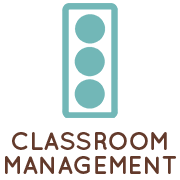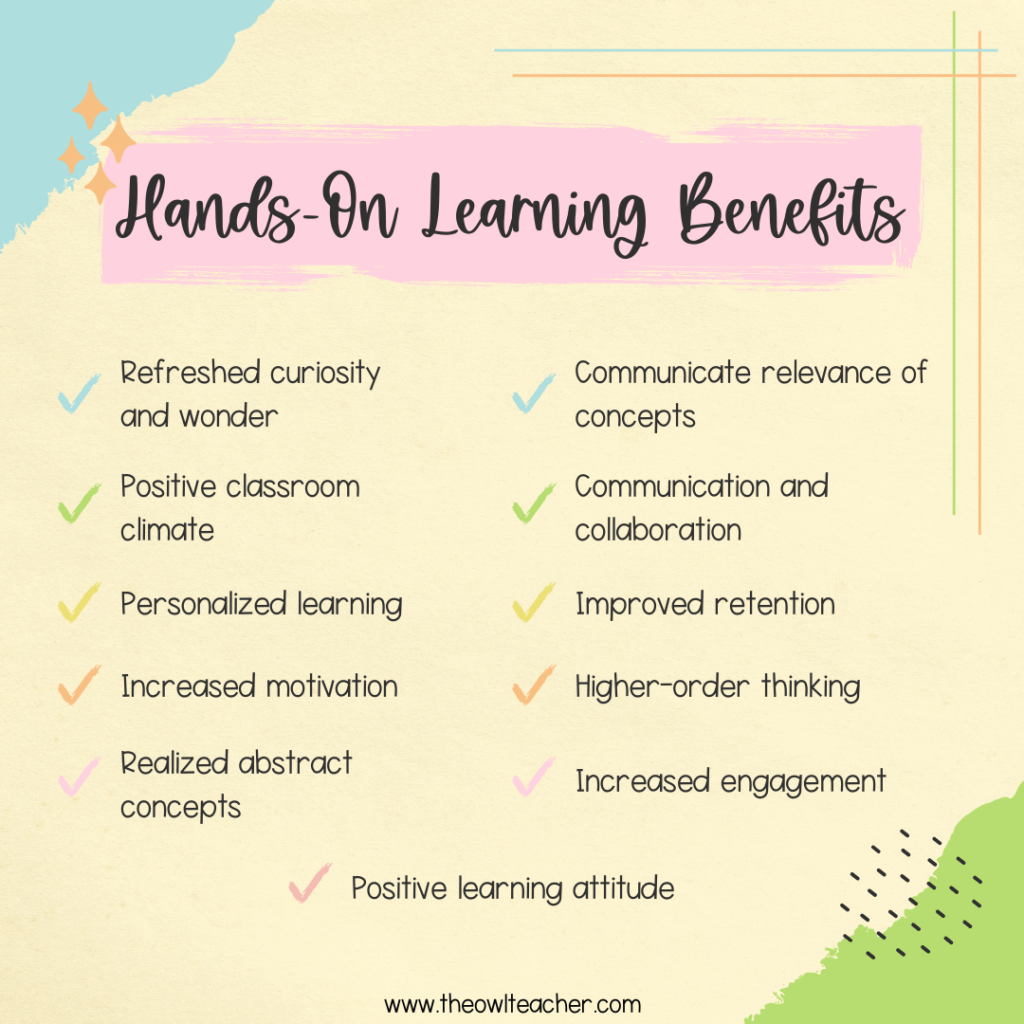Picture this: it’s 2023. The COVID pandemic is (somewhat) settling down, but it left a mile-wide learning gap in its wake. On top of that, we already have the usual stringent curriculum to cover. Once you add in the need for differentiation and remediation, it can be a struggle to find the time for anything else, such as hands-on learning.
As an educator, our days are already filled to the brim. I’ve spent my fair share of lunchtime doing a billion other things, and I know you have, too. Even with thorough lesson plans, things can still go awry–having to scramble to rewrite your lesson plans, for example, because students need to be caught up on last year’s curriculum is so disheartening. It can definitely make you feel like you’re constantly running out of time!
I’m sure you’ve tried everything: studying time management, researching ways to free up time during the day, and even checking out tips to leave work early when you’re feeling especially desperate. What I’m trying to say is that you’re already doing all you can to make your limited time stretch as far as possible!
That being said, how can we find the time in our busy, busy days to fit in hands-on learning? It already seems so time-consuming to plan and implement in our classrooms. But, hey, take it from me: sometimes you have to slow down in order to speed up later on! If we borrow the time now, we’ll save SO much time later on, and our kiddos will really benefit.
I have good news, too: I bet you’re already doing a lot of hands-on learning without realizing it! I challenge you to go through the tips later on in this blog post and find a few activities that you’re already doing in your classroom. First, though, I want to take the time to highlight the dozens of benefits of hands-on learning. After all, it’s important to know just how much value you’re getting out of fitting hands-on learning into your busy schedule!
Before I dive in, let it be known that this is not by any means a complete list of the benefits of hands-on learning. In fact, the benefits might even be infinite! But since I’m all about saving you time, I’ll try to keep it brief.
Well… As brief as I can, anyway. I may or may not have a slight tendency to ramble. 😉
Now, without further ado… Here are some strategies to make the most of our limited time in the classroom while still getting in the all-important concrete experiences!
1. The Benefits of Hands-On Learning
We all know that hands-on learning is key for keeping students engaged and receptive. Let’s take a deeper dive into just what else it’s good for, too!
Hands-on learning leads to a positive classroom experience and overall climate by personalizing each student’s education. That’s right–differentiation is baked into the notion of hands-on learning right from the get-go! When we cater to students’ individual needs, they simply learn better. When students “get it” easier, it makes them feel like geniuses! Naturally, this increases student motivation and ultimately improves retention. When students retain and have a positive experience, they’re more likely to foster a positive attitude toward learning.
In addition, hands-on learning sets a precedent for lifelong curiosity and wonder as well as higher-order thinking. Students will be allowed to see the relevance and importance of what they’re learning, which increases engagement and facilitates a connection between the abstract concepts and practical application. In addition, these activities promote collaboration and communication between students, which is an essential lifelong skill.
In short, it sounds a lot like hands-on learning is an excellent way to teach kiddos skills that will help them in the real world! If we can pepper in hands-on activities in our classrooms, our students will be well on their way to becoming successful problem solvers.
2. What to Do When There’s No Time for Hands-On Learning
Okay, Tammy, hands-on learning is great. But I just don’t have the time!
Hey, I hear you! As educators, we’re short enough on time as it is. Thankfully, I have a variety of ways to incorporate hands-on learning throughout your normal school day.
Use Out-of-Classroom Time
No time in the classroom? Just use time outside of the classroom. Easy!
Well, not always. However, you can certainly assign hands-on activities as homework or independent projects that students work on outside of your normal lesson blocks. Keep in mind, though, that homework should always be constructive in order to see results!
Besides home assignments for your students, you personally can also take advantage of your time outside of lessons. Specifically, take the time to reflect on and adjust your teaching practices often. Identify areas in your day-to-day agenda where time is being underutilized or inefficiently used. Every classroom is different, and what worked last year may be ineffective this year.
While you’re reflecting, you may also consider whether your lesson plans should be reworked. Prioritize and focus! Decide which areas you can replace (or supplement) with hands-on learning. Rather than moving through the textbook chapter by chapter and racing to cover a large amount of content, instead focus on key concepts and skills that students need to master. Plan your hands-on activities around those concepts to help elaborate and enrichen their learning.
Finally, take a few minutes to collaborate with team members! While your classroom is unique to your colleagues’, they may still offer insightful perspectives or new ideas to help you make time for hands-on learning. Ultimately, you’re all teaching the same curriculum!
Maintain a Routine Classroom
I’m sure you already know all about how to have your classroom run itself, and for good reason: it’s essential to have a reliable, consistent management system in place. This means your classroom must also have an efficient setup so you can quickly move through transitions–we don’t want to give students “slack off” time!
Time management and classroom management truly go hand-in-hand. For instance, by having a consistent routine, you can invite students to help with day-to-day tasks. This saves you time in the long run! Another easy time saver is to stay organized, especially when it comes to hands-on resources, in order to allow for easy access and cleanup.
Finally, implement time-management strategies such as setting clear time limits for activities, keeping students on track, and time-blocking. It may seem like you’re only saving a few minutes with each strategy, but I promise that the time really does add up. When we’re so pressed for time, every minute counts!
Seize Your Opportunities
When you first delve into hands-on learning, you may not feel like you have many opportunities to branch out. That’s okay! You can start small and build up to larger projects. Or, if you really don’t feel like you have the time, then you can make use of quick demonstrations to showcase key concepts and efficiently convey main ideas.
Beyond that, you can use various resources such as exit tickets as a quick activity that doubles as a check for understanding. You can also take advantage of technology with virtual science labs or field trips!
It’s always beneficial to take a step back and assess your situation. Are there resources you aren’t taking advantage of? Are there any resources that aren’t really working out in your classroom that can be replaced? You know your classroom best, and only you can choose which opportunities to pursue.
3. Hands-On Learning: Beyond the Manipulatives
When you hear “hands-on learning,” do you immediately envision manipulatives, science experiments, or anything along that vein? You’re not alone–that’s the most obvious implementation of hands-on activities! However, hands-on learning is so much more than just that. Sometimes, these words can be overused and end up creating more confusion than anything!
In reality, hands-on learning is anything that involves your students completing concrete, tactile, and kinesthetic activities. Ultimately, the question is: are my students learning through an experience? This “experience” can be created by a variety of activities that go beyond the traditional manipulatives or experiments. In fact, once I took a deep dive into the reality of hands-on learning, I realized that my classroom is full of these activities. I’m positive that yours is, too! Let’s take a look and see how many hands-on activities we’re doing without realizing it:
- Role plays
- Games
- Brainstorming sessions
- Song/dance
- Reader’s theatre/skits
- Scavenger hunts
- Challenges
- Word sorts
- Creating commercials/movies/other media
- Building models
- STEM challenges
- Graphic organizers
- Debates
- Roundtable writing
- Think-alouds
- Think-pair-share
- Drawing
By no means is this a complete list, of course. I could list dozens more “experiences,” but then we’d be here all day!
Ultimately, the point of this list is to highlight how natural hands-on learning can be. I’m willing to bet that you already do many of these activities daily in your lesson blocks, and that even more of them can be implemented in some fashion without taking up too much of your precious time. When it comes to hands-on learning, our aim is to provide students with an experience that goes beyond abstract concepts and forges a connection with the real world.
Our classroom time may be limited, but that just means we need to get creative with our teaching methods! Students deserve a positive learning experience with a strong emphasis on hands-on learning. Rather than blazing through chapters in a textbook, take the time to mix it up with hands-on experiences! Your students will thank you, and they’ll be all the better for it.
May you always have the time for hands-on learning!


















